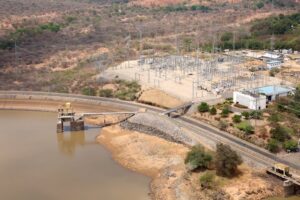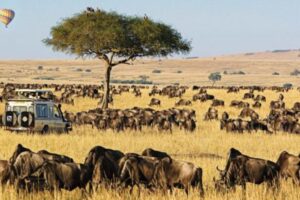
Power producer Kenya Electricity Generating Company (KenGen) is working on raising the height of Masinga Dam Spillway by an additional 1.5 Metres. This will not only help to store more water for energy generation but further reduce the effects of excess water downstream during heavy rains.
The scenic Masinga dam is the main reservoir in the cascade with a capacity of 1.56 billion cubic metres of water and is therefore used for water regulation throughout the year. Two vertical Kaplan turbines drive two generators capable of generating 40 MW of power.
The power generated at Masinga is transmitted to Kamburu and Mt. Kenya Region.
From Kamburu, power is transmitted to Nairobi through two 220kv lines.
The reservoir occupies a surface area of 120 sq. km.
The power station was conceived in 1960’s immediately after the commissioning of Kindaruma power station in 1968. By the time Kamburu power station was being commissioned in 1974, Tana River Development Authority TARDA, under finance provided by the United Kingdom Ministry of Overseas Development commissioned Watermeyer Legge Piesold & Uhlmann (WLPU) consultants to investigate a long term Tana basin development strategy within the content of alternative plans for public water supply, irrigation and hydropower.
Full feasibility studies were started in mid 1975 and they confirmed the viability of an upper reservoir for the Seven Forks cascade hydropower complex with a potential of about eleven power plants namely Masinga, Kamburu, Gitaru, Kindaruma, Kiambere, Karura, Mutonga, Low grand Falls, Usheni, Adamsons Falls, and Kora. The first five were developed between 1968 and 1988 while the remaining six are awaiting implementation.
The actual site of the Masinga plant was selected at about 150km from Nairobi via Nairobi – Thika – Kangonde -Embu highway and about 70km from Embu town.















